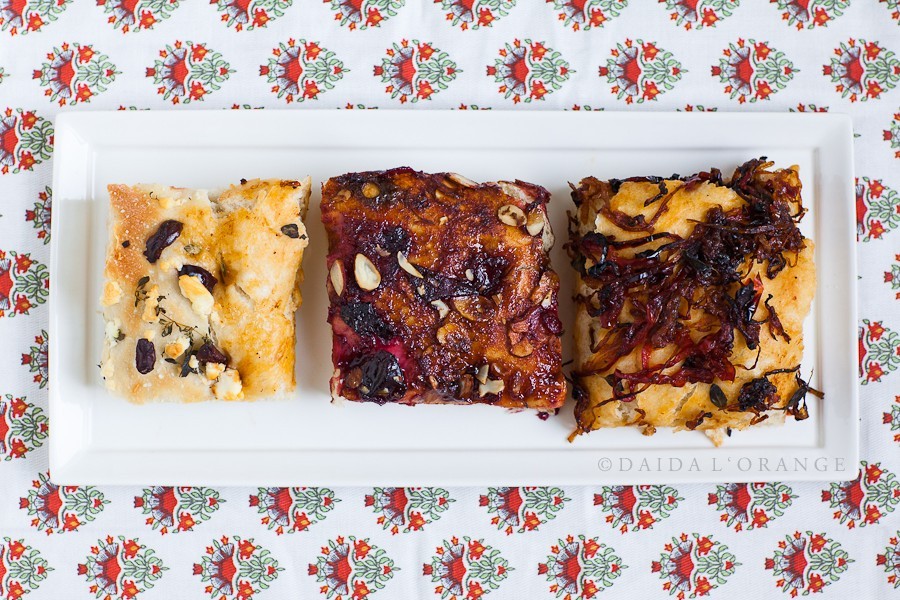BREAKING BREAD::My 3 Focaccias
 Thursday, May 31, 2012 at 10:07PM
Thursday, May 31, 2012 at 10:07PM 
Thanks to Twitter, I discovered a new baking challenge two weeks ago from a newly formed group called Breaking Bread Society. It was created for the purpose of inspiring us to get back to the basics of baking bread in our own kitchen, a task that may seem daunting at times. The group is founded by three lovely ladies: Lora - who authors the Italian blog Cake Duchess, Shulie - with her unique contribution of Indian and Mediterranian recipes on Food Wanderings, and Marnely - a native of the Dominican Republic and author of Cooking with Books. Take some time to find out more about the Breaking Bread Society and to visit the individual blogs of the founders. There are many inspirational recipes that I would love to try from all three blogs. Also, consider joining the group and trying your hand at next month's challenge.
Of course, I waited until the last day of May to develop my recipes for not one, but three different focaccias. The reason for making two savory focaccias was because I knew my children would not eat carmelized onions, preferring rather the usual feta and olives. My middle daughter, Cinnamon, wondered why the "pizza" was not round and why it was softer than the Neopolitan pizzas I bake on a baking stone - the ones that bake in 7 minutes as opposed to 30 minutes. I think it will take some time to convince her that focaccias are not too different than pizzas. Being stubborn, as her mother, she refused to eat it.
It started with simple ingredients for the first dough...
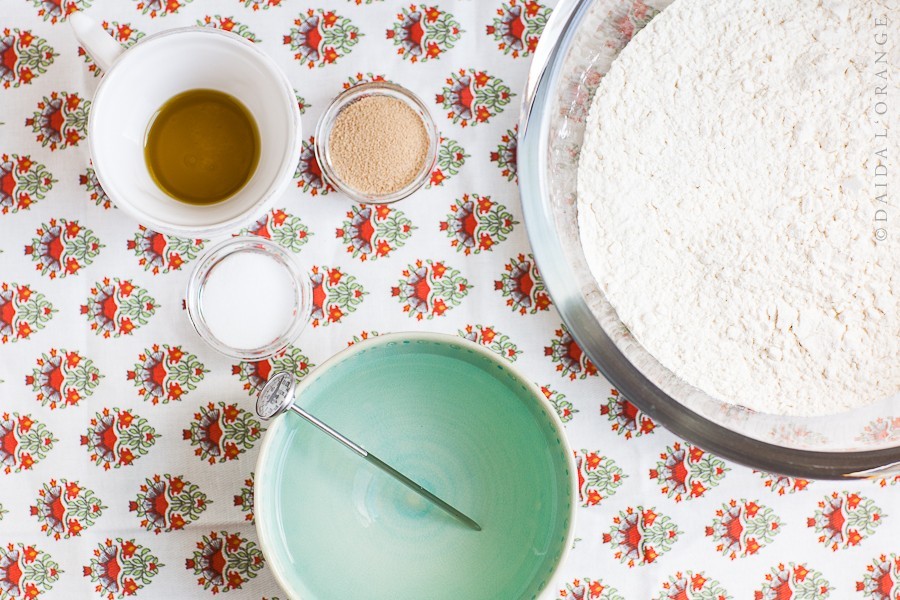
...until I realized that the flour to water ratio was incorrect. I desperately tried to save the dough, but after 5 minutes of kneading it (by hand) I had to admit to myself that this recipe simply was not going to work. Sadly, I had to toss out the dough. After spending a few moments gathering new ingredients, I set out to make a new batch. This time, I added more water in addition to100g more flour, resulting in an elastic dough which rose nicely after one and a half hours.
I knew I wanted carmelized onions as the topping and also knew that the time needed for these two mandoline-sliced onions (yes, this time I did use the guard and saved my thumb) and red peppers (not pictured) to fully carmelize would be close to an hour.
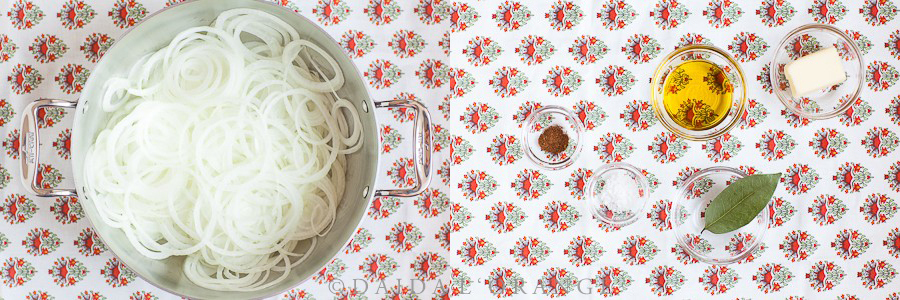
As the onions were cooking, I prepared the topping for the sweet focaccia. I had baby plums on hand, along with Šljivovica, and cinnamon. I then consulted the Flavor Bible to help me put together something quickly. The other ingredients not pictured here (I will have to write up another post at another time with more accurate measurements along with using more plums) are caster sugar, dark muscavado sugar, vanilla extract, nutmeg, and lemon zest.
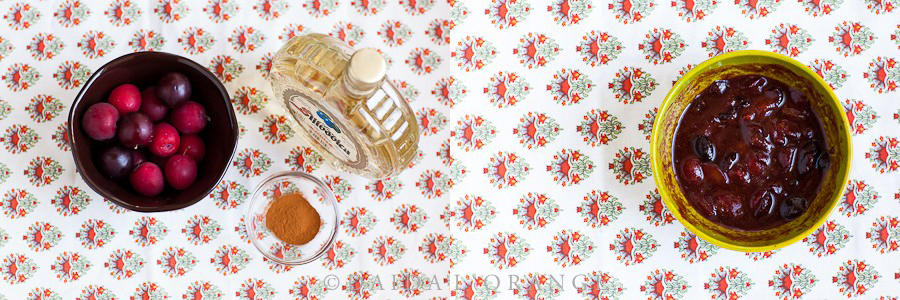
I walked outside and picked fresh thyme and oregano from my little garden.
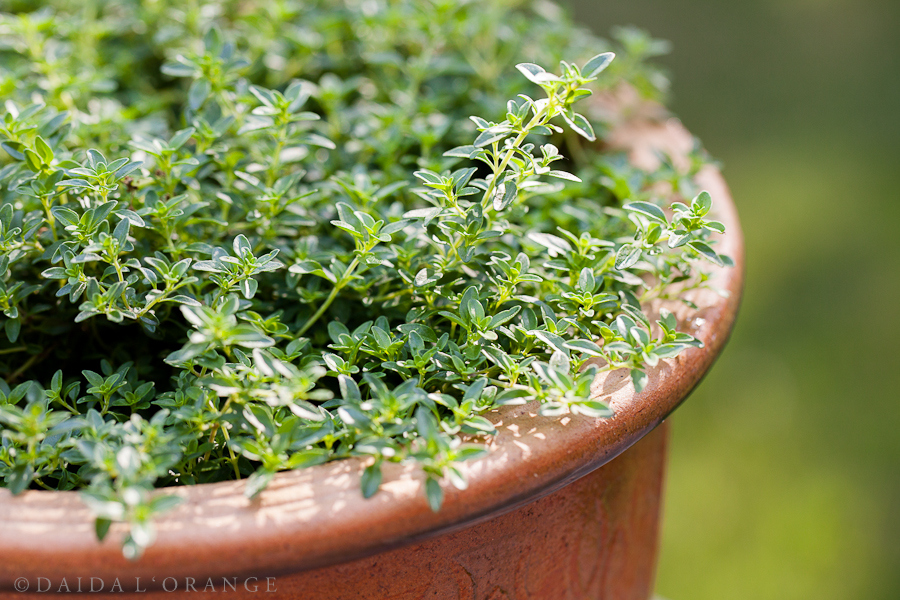
The dough continued to rise a second time for 30 minutes before it went into a 425°F oven. I baked both trays of focaccia at the same time, rotating the trays (front to back + top to bottom) after the first 15 minutes.

I scattered fresh thyme and oregano leaves over the top and sprinkled Portuguese fleur de sel over the entire dough. Over half of the dough, I crumbled Greek feta and topped with Kalamata olive wedges. Over the other half of the dough, I spread the carmelized onion/red bell pepper mixture.
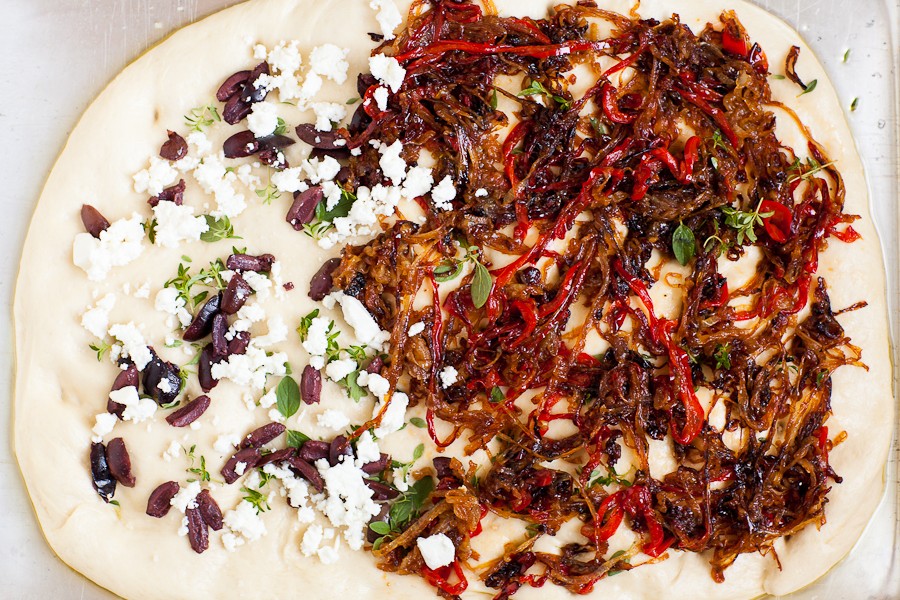
Before topping the sweet focaccia with the plum mixture, I scattered almond slices and sprinkled brown muscavado sugar over the top. I repeated these two ingredients on top of the plum mixture as well.
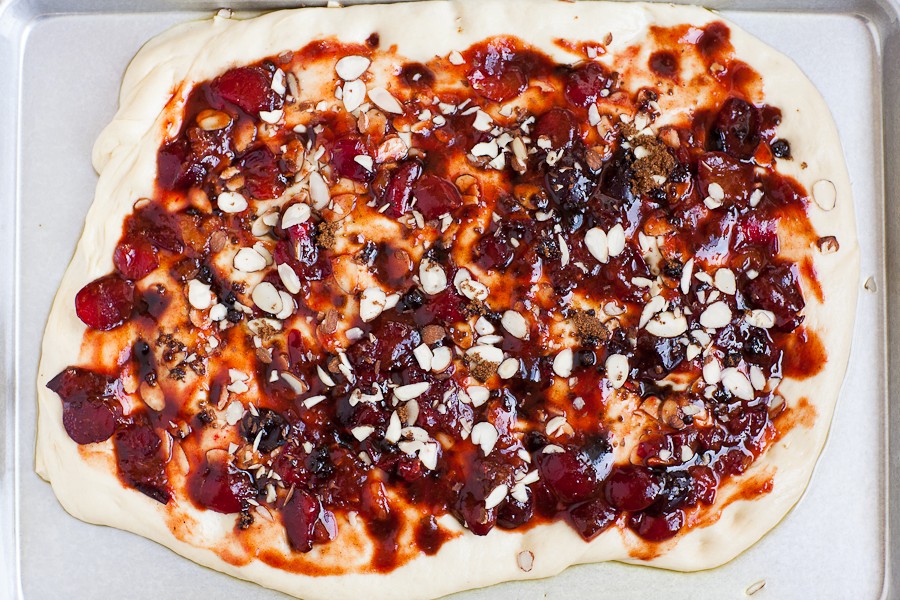
Focaccia Dough
INGREDIENTS
1 kg (35.2 ounces) bread flour
1 tablespoon fine sea salt
600 ml lukewarm water (105°F)
14 grams (1/2 ounce / 2 packages) active dry yeast (I used Red Star)
40 ml extra-virgin olive oil
8 tablespoons extra-virgin olive oil (divided) for drizzling over top
INSTRUCTIONS
Stir together flour and salt in a large bowl. Set aside.
Lightly oil another glass bowl for proofing dough. Set aside.
Dissolve yeast in warm water (about 5 minutes). Stir oil into yeast mixture, pour into flour mixture, and stir together with wooden spoon until dough comes together. Turn dough out onto lightly floured surface and knead until smooth and elastic - about 10 minutes. Place dough into oiled glass bowl, cover with plastic wrap, and cover with one or two dishtowels (I used one thick dishtowel folded in half). Find a warm place for proofing the dough (my preferred place is the oven, heat not turned on, but with the oven light on). Let rise until doubled in size - about 1.5 hours.
After dough has doubled in size, remove dough from bowl onto a lightly floured surface and cut into two equal pieces. Oil two jelly roll pans (I used this one which measures 18"x13"x1") and press each dough half into one pan. Cover with plastic wrap and kitchen towel and let rise for another 30 minutes (until close to doubled in size).
Meanwhile, preheat oven to 425°F.
With fingertips, after the second rise, make indentations in dough spaced about 1" apart. Drizzle 4 tablespoons olive oil over each focaccia and top with toppings of choice.
Bake for 25-30 minutes, or until golden brown. Cut into squares and serve.
***Carmelized onion/red pepper topping recipe and the plum topping for the sweet focaccia will be part of two separate posts.
